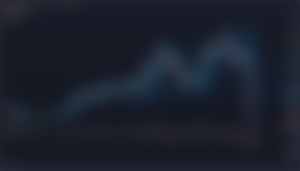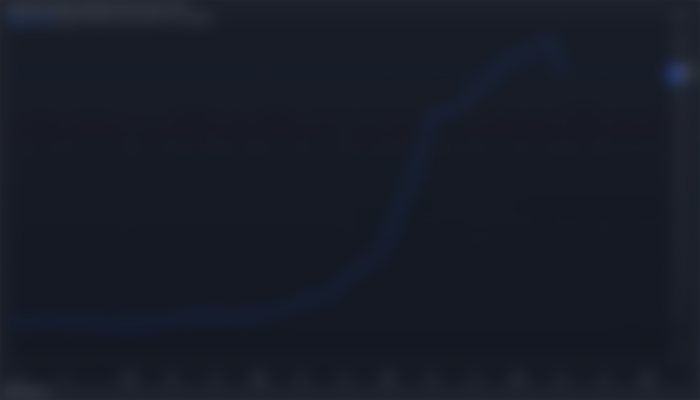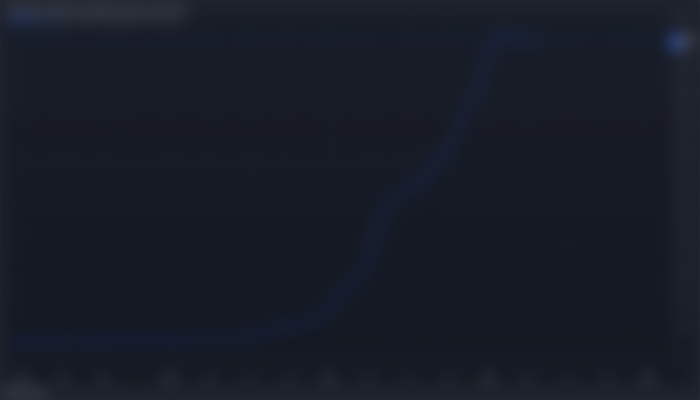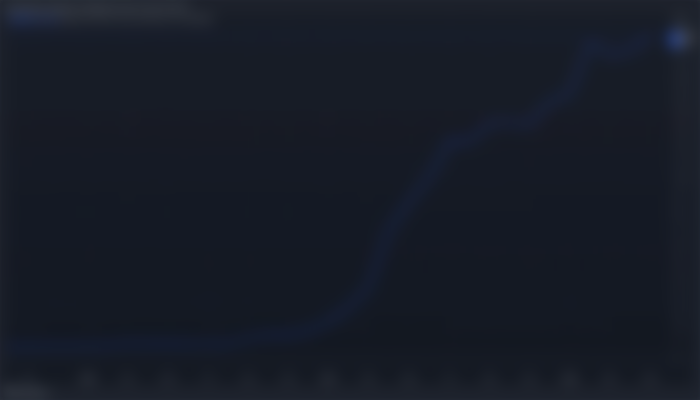The Downfall of Do Kwon, TerraUSD & LUNA

A lot has been said over the last couple weeks regarding the implosion of the TerraUSD (UST) and linked-derivative "governance" token, LUNA. I'm not here to beat a dead horse over the head: this meltdown has resulted, directly and indirectly, in the vaporization of over $200 Billion in the cryptocurrency market in a matter of days.
If you've been trading cryptocurrencies based solely on technical indicators, you may have foreseen a sell-off coming in some coins, but, few could have predicted the contagion effect this would have on the greater blockchain-based ecosystem as a whole. To put it in perspective, this wasn't an accidental fat finger sell-order ignition, no, this appears to have been a targeted attack executed by a wealthy entity, somewhere in the world.
With a truly decentralized (distributed network) blockchain, the idea of any one entity having control over price is deemed improbable, if not impossible. However, as the LUNA/UST attack demonstrated, the Terra blockchain was exposed to systematic shock that few retail investors could have orchestrated.
Following are going to be a few charts that have a few technical indicators displayed including the Moving Average Divergence-Convergence (MACD) and moving average price lines.

The price of LUNA tokens bottomed out the first time after going public, at $3.95 USD per token back on May 23, 2021. After a short period of accumulation that ended around July 20 of last year, the price of LUNA ballooned from $5.86 to a high of around $99.86 on December 26th, a belated Christmas present, earning early investors a more than 1600% Return-on-Investment (ROI). At first, that return may appear high to the untrained eye, but if you had the foresight to invest in stocks such as Amazon, Google, Microsoft, or Shopify in their early days and held to their peaks, you would have made a comparable return (if not more).
The obvious difference between those companies and the UST & LUNA tokens is utility. One could argue that those companies have had out-sized, fundamental impacts on the daily lives of billions of people around the globe. In order for an asset to have value, it needs to serve a purpose. Some assets are used for store-of-value (such as Bitcoin or the US Dollar), while others are used for the purposes of creating leverage for the asset owner to purchase even more assets, such as yachts, fine art, old wines and liquors.
The most glaring issue with UST, was that it lacked any discernible utility, other than the primary function, which was to provide liquidity via the Anchor lending protocol that was built on Terra's blockchain. The concept was simple: You deposit your UST into our lending protocol, and we, the Terraform Labs (company) will pay you an approximate 19.5% APY.
Before you say it, allow me. That return is much too high to be sustainable, without constant cash infusions, which, in a traditional bank setting, would mean more deposits being turned around and lent out for interest, as well. At its peak, the UST depository on Anchor held over 17 Billion (UST - not USD, as that is not what the Protocol uses), while only lending out about 29% of those deposits in the form of loans to users, who were, in turn, paying around 6-7% interest.
Now, you may ask, how can Terraform Labs (and Terra Station, the desktop and mobile wallet app where much of the UST and LUNA was staked/deposited) GUARANTEE a near-20% APY when they're getting less than 50% of that amount from lending? The answer is simple, they couldn't. While no one has come out publicly and claimed responsibility for the UST/LUNA attack, one thing was made abundantly throughout this meltdown: algorithmic-maintained "stablecoins" have not proven to be a stable store-of-value, as UST was originally designed to be.
While I personally was not tracking LUNA prices (valued in USD) at the time, I was aware that the price had recently peaked, around $119, and to me, it seemed like a very high price to pay for the tokens that were used for paying gas fees (transaction fees to settle on the Terra blockchain). Beginning with its creation in 2021, the underlying supply of LUNA tokens did not appear to be an issue in regards to liquidity. If you checked THORChain in March, you would have seen the liquidity pools for UST and LUNA explode with over $40 Billion worth of "value" being provided to users of the platform.
The contagion spread very quickly. Once word had gotten out about the meltdown taking place on Anchor Protocol, retail investors began dumping every UST & LUNA token they had, in an epic rush to cash out and head for cover to try and avoid the inevitable fallout. Many people weren't fast enough. Reddit is strewn with reports of suicide and people being hospitalized following the evaporation of UST & LUNA's respective values.
There is a silver lining, of course, to all of this, that should NOT be disregarded. The biggest issue with Anchor Protocol was its unsustainable "GUARANTEED" yield. When anyone guarantees you anything, be very careful. Ponzi schemes don't always present themselves the same way, especially in the cryptocurrency space. Whether or not you believe Do Kwon, the CEO and founder of Terraform Labs, should be held criminally liable for what happened is pretty irrelevant.
A quick glance at extradition laws around the world will speak volumes. Shortly before the dissolution of the corporate entity, Terraform Labs Inc (South Korea), it was reported that Do Kwon had fled the country and moved to Singapore, which is viewed as having very friendly financial regulations focused on digital payments. Singapore also has an active extradition treaty with the US that has been in effect since 1935, so, if the SEC were to bring criminal action against Do Kwon, the government of Singapore could be compelled to extradite him to the states for prosecution.
It was widely speculated last year that there were many FBI- and SEC-related investigations that were ongoing into companies in the cryptocurrency space. To understand the impact this "oversight" has had, one may only need to look at the largest so-called "Decentralized" Exchange (DEX) in the world, Uniswap, which was created by a company, Uniswap Labs. The very fact that there is a corporate entity behind the Uniswap DEX made it vulnerable to legal action, while a truly decentralized exchange would face no such consequences.
Uniswap had introduced a product known as synthetic assets, which enabled the creation of a large amount of Ethereum-based (ETH) derivatives, which could then be withdrawn from Uniswap and traded among private individuals. Anyone who knows anything about the SEC knows that the free exchange of money is a big no-no, especially since there is no bank backstopping most of the transactions in the cryptocurrency space that take place between 2 private individuals.
Within a few weeks of releasing synthetic cryptocurrency assets for trade, Uniswap Labs was threatened with legal action unless they removed the new products immediately. Of course, Uniswap Labs complied, because, it was in their best interests to do so. Without the Uniswap exchange, a lot of the ETH token trade volume would be cut down, and cryptocurrency, as a sub-sector of financial services, would take a huge hit. The de-listings from Uniswap showed that a single point of failure is a death knell for any financial product or application that wants to advertise itself as "decentralized."
One of the many ways that people could acquire UST & LUNA tokens was via the centralized exchanges, such as Coinbase, Kraken, Binance, Gemini, Bitfinex, and FTX. These exchanges require full Know-Your-Customer and Anti-Money-Laundering compliance from all their users who are trading from cryptocurrency to fiat currency (such as USD, EUR, GBP, CAD, AUD, etc) and vice-versa. While there is nothing objectionable about that in their specific cases, the centralized foundation behind those exchanges opens them up for exploitation and cyber-attacks.
Much like the stock markets of the world, the centralized cryptocurrency exchanges have faced all sorts of attacks targeting their long-term viability as reliable sources of liquidity for hundreds, if not thousands, of cryptocurrencies. UST and LUNA liquidity dried up overnight. Within 24 hours, everyone who had heard the news had headed for the exits. When Binance announced that they were going to be de-listing both tokens, that introduced further shock.
Binance, being the largest cryptocurrency exchange in the world by number of users, de-listing a cryptocurrency is a big deal, since they are one of the largest providers of access to obtaining particular coins. If cryptocurrencies are to truly democratize access to finance for all, there has to be a degree of user-friendliness, which is lacking in many of the blockchains operating today.
While there are definitely some chains out there that have developers creating products with nice User Interfaces and easy-to-navigate trading, there is still a gap between being ready for mass adoption around the world, and where the cryptocurrency space stands today, on May 21, 2022. For one, the proliferation of Ponzi schemes has been a detriment to public perception of the cryptocurrency sector as a whole. While there have been a multitude of penny stock pump n dumps and insider trading within the traditional finance space (stocks, bonds, commodities, FX), the cryptocurrency space is no stranger to the same types of market manipulation.
What it boils down to, is doing your due diligence on ANY financial product you have interest in using, and maybe, even ask a friend or a trusted mentor, to get a second opinion, to either confirm your suspicions (if you believe something to be a Ponzi scheme) or argue the opposite. Two brains are usually better than one, and having another perspective on something can only help you get a better grasp of what a particular coin or token is really all about.
There have been many Ponzi schemes in the financial world throughout history. The UST/LUNA setup was not the first Ponzi, and certainly won't be the last one in the cryptocurrency space. Right now, as I sit here writing this, there are other self-proclaimed "stablecoins" trading hundreds of billions of dollars in "value" across the world. Here are the four largest remaining players in that space:
USDT aka US Dollar Tether, currently worth ~$74B representing about 6% of the total cryptocurrency market cap:

USDC aka US Dollar Coin, currently worth ~$52.3B, representing about 4% of the total market cap:

BUSD aka Binance-Pegged US Dollar, currently worth ~$18.6B, also representing about 4%:

DAI currently worth ~$6.6B, representing about 0.52% of the total cryptocurrency market cap:

Together, these 4 "stablecoins" comprise $151.5 Billion, which makes up 14.52% of the total cryptocurrency market, valued at ~$1.24 Trillion:

At current market prices, Bitcoin makes up about 44% of the total market cap, while Ethereum follows closely behind with 19%. The entire value of the previously mentioned four stablecoins is nearly equal to the 2nd largest cryptocurrency in the world (Ethereum's ETH coin). While one could argue that the risk is distributed more than if you were to solely have a single stablecoin, not all coins are equal. Tether being the largest of the remaining stablecoins poses the greatest systemic risk, in my opinion.
$74 Billion might seem like a drop in the bucket to traditional financial institutions that hold tens of trillions of dollars collectively around the globe, Tether has an out-sized contagion risk, similar to UST. Were USDT to lose its peg to the US Dollar, there would be a massive fallout. While I am not insinuating that USD Tether is a Ponzi scheme, I am skeptical of its claims regarding its backing with commercial paper debt and US Treasury Bills. Seeing as they have no certified audit done by a third party proving their reserves, I will operate under the assumption that there are no real reserves of US Dollar cash on the Tether Foundation's balance sheet.
With that being said, an implosion in Tether could lead to much more than $200 Billion being wiped out in a subsequent liquidity crisis, not just affecting the major centralized exchanges, but also having an impact on DEXs like Uniswap, SushiSwap, and others that host USDT-based trading pairs. Eventually, I believe all the coins claiming to hold stable value 1:1 pegged with the US Dollar will be tested, and there's only two possible outcomes: survival or failure.
And as we saw with Terra (UST & LUNA), the next Ponzi scheme about to collapse could be right under our noses..





